Roles of RodZ and class A PBP1b in the assembly and regulation of the peripheral peptidoglycan elongasome in ovoid-shaped cells of Streptococcus pneumoniae D39
- PMID: 36001060
- PMCID: PMC9804626
- DOI: 10.1111/mmi.14969
Roles of RodZ and class A PBP1b in the assembly and regulation of the peripheral peptidoglycan elongasome in ovoid-shaped cells of Streptococcus pneumoniae D39
Abstract
RodZ of rod-shaped bacteria functions to link MreB filaments to the Rod peptidoglycan (PG) synthase complex that moves circumferentially perpendicular to the long cell axis, creating hoop-like sidewall PG. Ovoid-shaped bacteria, such as Streptococcus pneumoniae (pneumococcus; Spn) that lack MreB, use a different modality for peripheral PG elongation that emanates from the midcell of dividing cells. Yet, S. pneumoniae encodes a RodZ homolog similar to RodZ in rod-shaped bacteria. We show here that the helix-turn-helix and transmembrane domains of RodZ(Spn) are essential for growth at 37°C. ΔrodZ mutations are suppressed by Δpbp1a, mpgA(Y488D), and ΔkhpA mutations that suppress ΔmreC, but not ΔcozE. Consistent with a role in PG elongation, RodZ(Spn) co-localizes with MreC and aPBP1a throughout the cell cycle and forms complexes and interacts with PG elongasome proteins and regulators. Depletion of RodZ(Spn) results in aberrantly shaped, non-growing cells and mislocalization of elongasome proteins MreC, PBP2b, and RodA. Moreover, Tn-seq reveals that RodZ(Spn), but not MreCD(Spn), displays a specific synthetic-viable genetic relationship with aPBP1b, whose function is unknown. We conclude that RodZ(Spn) acts as a scaffolding protein required for elongasome assembly and function and that aPBP1b, like aPBP1a, plays a role in elongasome regulation and possibly peripheral PG synthesis.
Keywords: class A PBP function and regulation; elongasome assembly; peptidoglycan synthesis; synthetic-viable genetic relationships.
© 2022 The Authors. Molecular Microbiology published by John Wiley & Sons Ltd.
Conflict of interest statement
The authors declare that they have no conflicts of interests.
Figures

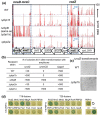
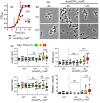
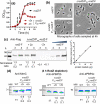

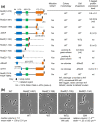
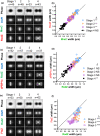
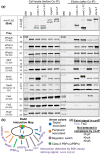
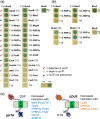
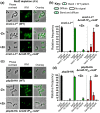
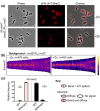

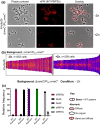
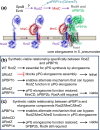
Similar articles
-
Elongasome core proteins and class A PBP1a display zonal, processive movement at the midcell of Streptococcus pneumoniae.Proc Natl Acad Sci U S A. 2024 Jun 18;121(25):e2401831121. doi: 10.1073/pnas.2401831121. Epub 2024 Jun 14. Proc Natl Acad Sci U S A. 2024. PMID: 38875147 Free PMC article.
-
Elongasome core proteins and class A PBP1a display zonal, processive movement at the midcell of Streptococcus pneumoniae.bioRxiv [Preprint]. 2024 Apr 30:2024.01.10.575112. doi: 10.1101/2024.01.10.575112. bioRxiv. 2024. Update in: Proc Natl Acad Sci U S A. 2024 Jun 18;121(25):e2401831121. doi: 10.1073/pnas.2401831121. PMID: 38328058 Free PMC article. Updated. Preprint.
-
Suppression of a deletion mutation in the gene encoding essential PBP2b reveals a new lytic transglycosylase involved in peripheral peptidoglycan synthesis in Streptococcus pneumoniae D39.Mol Microbiol. 2016 Jun;100(6):1039-65. doi: 10.1111/mmi.13366. Epub 2016 Apr 15. Mol Microbiol. 2016. PMID: 26933838 Free PMC article.
-
Do the divisome and elongasome share a common evolutionary past?Curr Opin Microbiol. 2013 Dec;16(6):745-51. doi: 10.1016/j.mib.2013.09.003. Epub 2013 Oct 1. Curr Opin Microbiol. 2013. PMID: 24094808 Review.
-
RodZ: a key-player in cell elongation and cell division in Escherichia coli.AIMS Microbiol. 2019 Nov 7;5(4):358-367. doi: 10.3934/microbiol.2019.4.358. eCollection 2019. AIMS Microbiol. 2019. PMID: 31915748 Free PMC article. Review.
Cited by
-
Elongasome core proteins and class A PBP1a display zonal, processive movement at the midcell of Streptococcus pneumoniae.Proc Natl Acad Sci U S A. 2024 Jun 18;121(25):e2401831121. doi: 10.1073/pnas.2401831121. Epub 2024 Jun 14. Proc Natl Acad Sci U S A. 2024. PMID: 38875147 Free PMC article.
-
The role of GpsB in Staphylococcus aureus cell morphogenesis.mBio. 2024 Mar 13;15(3):e0323523. doi: 10.1128/mbio.03235-23. Epub 2024 Feb 6. mBio. 2024. PMID: 38319093 Free PMC article.
-
GpsB Coordinates StkP Signaling as a PASTA Kinase Adaptor in Streptococcus pneumoniae Cell Division.J Mol Biol. 2024 Nov 15;436(22):168797. doi: 10.1016/j.jmb.2024.168797. Epub 2024 Sep 19. J Mol Biol. 2024. PMID: 39303764
-
Glycosylation of serine/threonine-rich intrinsically disordered regions of membrane-associated proteins in streptococci.bioRxiv [Preprint]. 2025 Mar 17:2024.05.05.592596. doi: 10.1101/2024.05.05.592596. bioRxiv. 2025. Update in: Nat Commun. 2025 Apr 29;16(1):4011. doi: 10.1038/s41467-025-58692-8. PMID: 38746434 Free PMC article. Updated. Preprint.
-
Negative regulation of MurZ and MurA underlies the essentiality of GpsB- and StkP-mediated protein phosphorylation in Streptococcus pneumoniae D39.Mol Microbiol. 2023 Sep;120(3):351-383. doi: 10.1111/mmi.15122. Epub 2023 Jul 14. Mol Microbiol. 2023. PMID: 37452010 Free PMC article.
References
-
- Aaron, M. , Charbon, G. , Lam, H. , Schwarz, H. , Vollmer, W. & Jacobs‐Wagner, C. (2007) The tubulin homologue FtsZ contributes to cell elongation by guiding cell wall precursor synthesis in Caulobacter crescentus . Molecular Microbiology, 64, 938–952. - PubMed
-
- Aravind, L. , Anantharaman, V. , Balaji, S. , Babu, M.M. & Iyer, L.M. (2005) The many faces of the helix‐turn‐helix domain: transcription regulation and beyond. FEMS Microbiology Reviews, 29, 231–262. - PubMed
Publication types
MeSH terms
Substances
Grants and funding
LinkOut - more resources
Full Text Sources
Molecular Biology Databases
Research Materials
Miscellaneous

